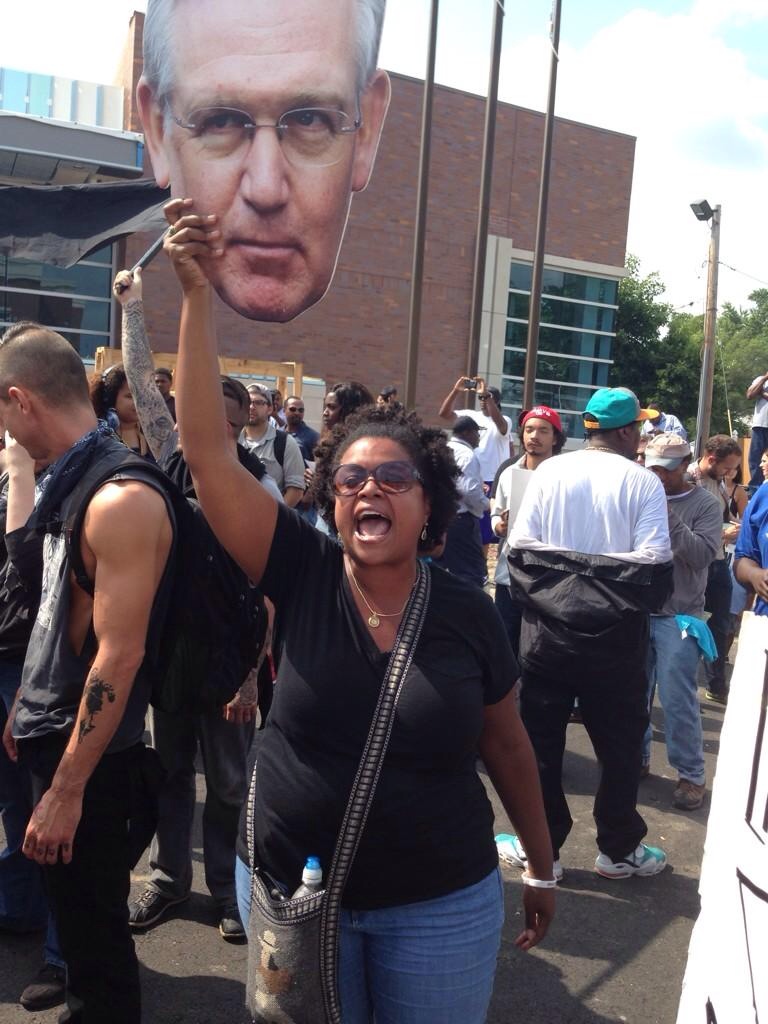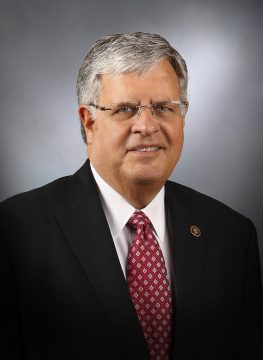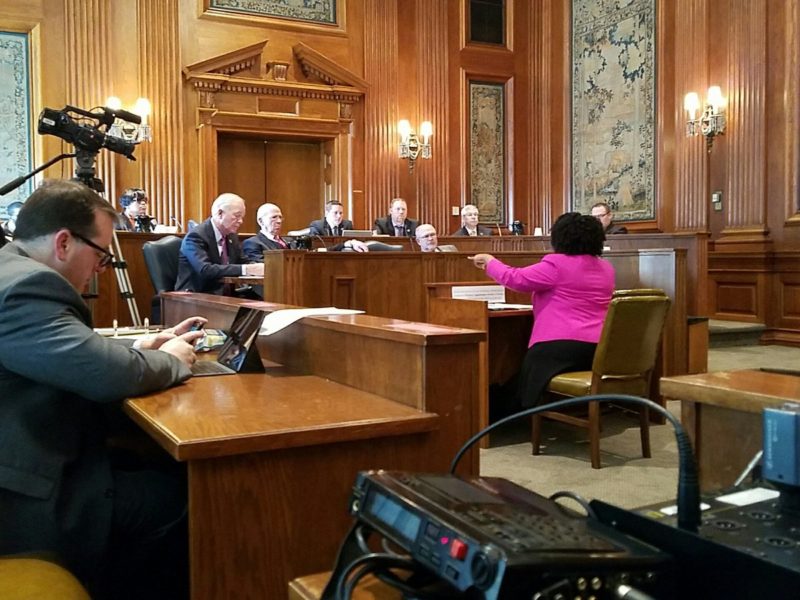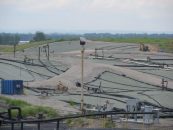JEFFERSON CITY, Mo. – With the state budget facing a potential $700 million shortfall, Sen. Maria Chappelle-Nadal has filed legislation hoping to see the state buy north of 90 homes, totaling almost $13 million, near the West Lake Landfill.
The West Lake Landfill has been in operation for over 50 years, yet last Wednesday, Chappelle-Nadal had bill supporters who again testified saying they might not have purchased their homes had they known about the debatable radioactivity in the landfill.
The St. Louis region and the state have again and again demanded a solution from the government. The Environmental Protection Agency (EPA) decided in 2008 that the most appropriate solution for addressing concerns about the landfill was to cap it to ensure the surrounding areas were not threatened.
The EPA made no decision during the entire eight years of President Barack Obama’s administration, instead releasing studies that show the landfill does not present a risk to nearby homes. However, Chappelle-Nadal has repeatedly rejected Obama’s claims.

“The St. Louis region is running out of patience,” Sen. Dave Schatz said in October 2016. “The time to decide what to do at the West Lake Landfill is here. As a Franklin County resident, I prefer an option that puts a safe and quick end to the discussion — I support the EPA’s 2008 decision to cap the site.”
In fall 2015, buzz arose regarding the landfill when then-Attorney General Chris Koster called for action from the EPA. One EPA solution proposed involved moving the waste from the landfill, leading to state legislators pushing back for over a year. Legislators also rallied around capping the landfill as a solution, instead of lending support to Chappelle-Nadal’s buyout proposal.
“The EPA has said that the site poses no risk to public health,” said House Conservation and Natural Resources Committee Chair Sonya Murray Anderson in October 2015. “…I’ve been to the landfill sites in Bridgeton and found them to be safe and closely monitored. I agree with many others throughout the region that want the West Lake Landfill site cleaned up with a cap without delay and for the issue to be resolved once and for all.”
Now-House Caucus Chair Glen Kolkmeyer, R-Wellington – who also serves as the House Transportation Committee chair – echoed the solution.

“The West Lake Landfill needs to be capped immediately,” said Kolkmeyer. “The Bridgeton Landfill is contained and the problems at that site will eventually subside. Neither pose a threat to public health. As transportation chair and a representative of a district along Interstate 70, I do not support the site being excavated and unnecessarily hauled through St. Louis and St. Charles Counties, as well as all of rural Missouri. We need to cap the landfill and move on.
“The Bridgeton Landfill is closely monitored and poses no threat to public health,” Kolkmeyer continued. “This isn’t a campaign commercial – this is real life – and Koster’s actions have scared people into closing businesses and moving out of an already vulnerable local economy.”
The EPA also stepped forward, with Mark Hague, acting administrator of EPA Region VII, writing in October 2015 a letter to the editor.
“Numerous studies by federal and state partners demonstrate that there is no current offsite health risk,” wrote Hague.
The Center for Disease Control and Prevention (CDC) has echoed the EPA’s claims, saying levels of radioactivity and radon are below dangerous levels.
“[T]here is no evidence of contamination along roads leading to the landfill property,” reads the CDC report.
Research from the state backs up the conclusions of the CDC and EPA.
“Gamma radiation rates continue to be indistinguishable from natural background levels and were below levels of public health concern,” reads the October 2015 Missouri Department of Health and Senior Services report. In addition, the Department found consistent with air monitoring for more than two years, all other constituents analyzed in air surrounding the landfill were “below levels of public health concern.”

However, Chappelle-Nadal has long-contended that the landfill is causing area contamination leading to health problems.
“When people are [expletive] dying, I’m going to be an alarmist,” she said in October 2015.
Yet, academics continue to line up, equating the radiation from the landfill to being less than simply being in Denver, Colorado.
“There are some unintended consequences of fear. What fear does is it makes us act in an irrational way…And we have to remember that there are different places in the United States for example where background radiation is much different than it is in St. Louis,” Dr. Henry Royal, professor of radiology and associate director of the division of nuclear medicine at Washington University’s School of Medicine, said. “If you live in Denver, you’re exposed to 100 millirems of radiation more every year of your life than if you live in St. Louis. The dose from the West Lake landfill — we’re talking, you know, maybe millirem amounts — much less than what’s in Denver.”
The Idaho National Laboratory (INL) has backed up the safety claims, with Dr. Mary Lou Dunzik-Gougar, an associate professor of nuclear engineering and a research scientist at INL, saying, “The only way they’d be dangerous to a person is if they were somehow ingested in large quantities. So, the question is whether or not these radionuclides could somehow get into the water or air and then be ingested to a large extent, which is unlikely because you’d need to ingest quite a lot. It’s really a matter of cleanup to meet regulatory requirements.”
Six months later, Koster again sent a letter to the EPA criticizing the agency for not meeting its self-imposed deadlines for work at the West Lake and Bridgeton landfill sites and demanding greater responsiveness and transparency. Koster demanded the EPA release a solution and to act.
“Too much time has been lost already,” Koster wrote in March 2016. “If the EPA does not intend to follow through on its obligations, it should say so and allow a more responsive agency to step in and do the work.”
However, Obama chose to allow his administration to expire without a decision while standing by reports and studies that the area was not unsafe. Chappelle-Nadal expressed outrage.
“For us, as a state, to do nothing at all is immoral and irresponsible, but mostly immoral because there are people who are dying. I wasn’t raised to turn my back on people,” Chappelle-Nadal said in 2016. “This is the combination of a civil action Erin Brockovich and Flint, Michigan, put all into one because people are literally living on top of radioactive waste and possibly drinking [it].”

Missouri Senate President Pro Tem Ron Richard dismissed the issue completely last fall, stating the EPA needs to cap the site so all “can move on.”
“We have been dealing with the West Lake Landfill issue long enough,” Richard said in October 2016. “The time has come for the EPA to approve encapsulating the site so we can move on.”
Richard met an unexpected ally in his stance from former Secretary-Treasurer of the St. Louis Building and Construction Trades Council Jeff Aboussie.
“St. Louis has waited decades for the federal government to deal with the West Lake Landfill, and we cannot spend decades more pursuing a lengthy excavation remedy,” said Aboussie. “Unlike partial or full excavation — which brings significant or unacceptable risks for those doing the work, the nearby community, and the operations at Lambert airport — containing the radiological material on-site with proper monitoring ensures that this problem is handled in the least amount of time.
And again, Chappelle-Nadal insists there is clear evidence linking that waste to the headaches area employees get from the drinking water and the illnesses local residents have, testifying in support of her bill at a senate hearing on Wednesday.
“There are several people who are living in a community adjacent to the landfill who are getting sick,” she said. “There are a number of cases that have been reported to the state of Missouri of people using the water to make tea or coffee and having to go to the emergency room.”
While the lawmakers all seem to agree that something should be done about the waste concerns, the agreement on what that might be.
While Sen. Ryan Silvey heard the bill as one of the first in the committee he chairs this session agreed with Chappelle-Nadal that it was something to be addressed, but said that since it was a federally-created problem, it was a matter that they address.
Chappelle-Nadal agreed that bill is a treatment for a problem that her constituents have been dealing with for years, but that it is not the cure.
“This a much, much bigger issue that must be addressed,” she said.
The bill’s language further calls for written disclosure of the property’s contamination in the event of any sale, rental or transfer. Failure to disclose that information under the proposed law would result in a Class A misdemeanor.
But perhaps the largest concern and the biggest battle for this bill will be the cost – estimated at $12.5 million.
The bill would let homeowners apply to have their property purchased by the state at fair market value. That value would be based on an assessment from the Department of Natural Resources as well as an appraisal provided by the property owner. If the department disagrees with the owner’s appraisal, a third appraisal will be conducted by a real estate appraiser and the rate given will be based on the average of all three appraisals.
The proposal would create the Hazardous Waste Home Acquisition Program, setting aside up to $12.5 million to help the state buy the properties in question. The state was $400 million in the red before Gov. Nixon’s withholds, with a current budget shortfall of $39 million.
The multi-million dollar price tag is a concern for several lawmakers, being a substantial amount of money.
Chapelle-Nadal said federal resources could potentially reimburse the state for the purchases, which would help offset some of the costs.
She maintains that it is more than just a money issue – it’s a public safety matter, a sentiment shared by Rep. Mark Matthiesen, the freshman representative of the affected district, who appeared to testify before the committee.
“I understand that this bill, in itself, will not actually solve the problem and clean up the material,” Matthiesen said. “We’re asking the federal government to do that. As a state, we do not have the funds for the ultimate solution. However, if we as a state do not do our part to protect our citizens, why should we ask the federal government to do their part if we aren’t going to do ours?”
Yet, this state overwhelmingly voted in support of the next President of the United States – Donald Trump – who has proposed a pick for the next leader of the EPA – Oklahoma Attorney General Scott Pruitt, who many expect to be capable of making decisions on sites such as Westlake. Numerous state agriculture groups, including the Missouri Cattlemen’s Association, Missouri Pork Association, and more joined lawmakers in expressing their frustration with the EPA for their own reasons, calling for reform at the hands of Pruitt.
Benjamin Peters contributed to this story.
Rachael Herndon was the editor at The Missouri Times and also produced This Week in Missouri Politics, published Missouri Times Magazine, and co-hosted the #MoLeg podcast. She joined The Missouri Times in 2014, returning to political reporting after working as a campaign and legislative staffer.
Rachael studied at the University of Missouri – Columbia. She lives in Jefferson City with her husband, Brandon, and their two children.








